“Non-shedding AND hypoallergenic!” If you’re thinking about getting a Goldendoodle to be your next four-legged family member, you’ve probably heard the above statement from every Goldendoodle breeder out there. But maybe you’re skeptical and still wonder, “Really, though…do Goldendoodles shed?”
We’ve all experienced it – the bothersome layer of pet hair that clings to every square-inch of our clothing. Or, for those of us with pet allergies, sneezing and wheezing our way through the day. For some people, it’s a way of life…but since you’re here, we’re guessing you don’t want to be one of those people.
So…Do Goldendoodles Shed?
I hate to be the bearer of bad news, but there’s literally no such thing as a 100% non-shedding dog. This, unfortunately, includes Goldendoodles. (And anyone who says otherwise is just trying to sell you something 😉 )
The GOOD NEWS is that there’s typically a good chance that a Goldendoodle will shed way less than the average dog. So to answer the question of “do Goldendoodles shed” really depends on how each Goldendoodle was bred, i.e. what its generation is.
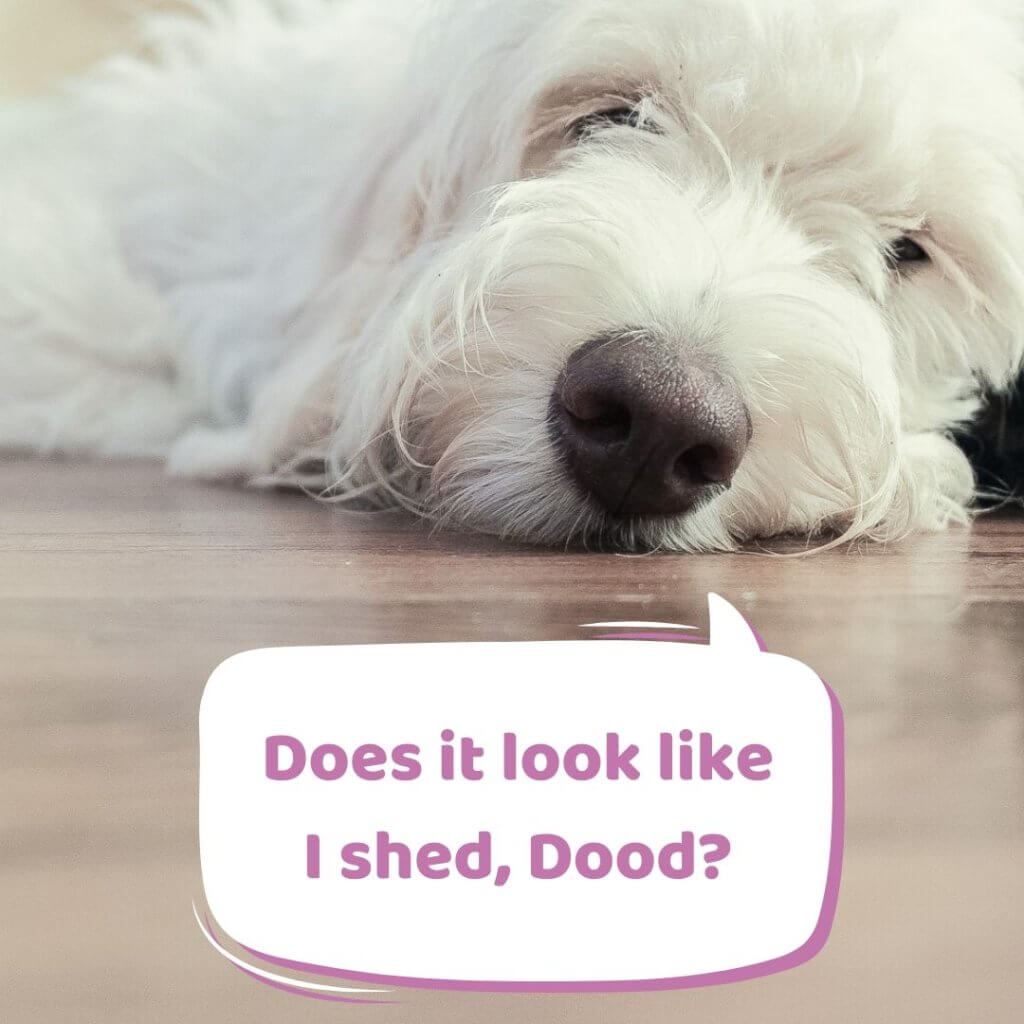
What Are the Chances of a Goldendoodle Shedding A LOT?
To understand the chances of a Goldendoodle shedding any amount, you have to know a little about genetics. If you don’t, no worries – it’s pretty easy to understand. Let us explain.
F1 Goldendoodles
Let’s say you have a first generation (F1) Goldendoodle, whose parents are a purebred Golden Retriever and a purebred Standard Poodle. Now, Golden Retrievers are typically heavy shedders and Poodles are typically non- shedding. As such, genetically (and mathematically) speaking, their offspring pups will have some chance of shedding. And by some, we mean less than a Golden Retriever, but more than a Poodle.
Here’s a basic genetics chart – technically called a Punnett square – showing the genotype (genetic makeup) for F1 Goldendoodle shedding.
| F1 Goldendoodle | Parent: Poodle – light shedding (pp) |
| Parent: Golden Retriever – heavy shedding (GG) | ppGG |
What Are the Chances?
In the table above, “ppGG” indicates that the F1 Goldendoodle will have a 50% chance of heavy shedding and a 50% chance of light/non-shedding. However, we all know that genetics are never black and white.
Think of yourself and your siblings as an example. Your mom may have blonde hair, and your dad may have dark brown hair. Yet, you may have light brown hair, while your sister got mom’s blonde hair and your brother got dad’s dark brown hair.
Most likely, the F1 Goldendoodle will fall somewhere in between heavy and non-shedding.
In my own experience with Chloe (my F1 Doodle), I seemed to luck out, as she hardly sheds at all. The only time I notice her hair is when there’s a small clump of it in the corner of the room after a few weeks of not vacuuming. That’s actually pretty comparable to the normal amount of hair that humans shed!
However, I should note that a good amount of hair comes out when I brush her every few days.
-Whitney, Doodle Doods founder
F1b Goldendoodles
Now, if you have a first generation backcross, or F1b Goldendoodle, the genotype will be a little different. An F1b Goldendoodle whose parents are an F1 Goldendoodle and a purebred Poodle will, in theory, be 25% Golden Retriever and 75% Poodle. As such, there’s a much higher chance that the F1b pup will be a very light shedder. This is because the pup contains more genes from the Poodle side, and standard poodles are inherently light/non-shedding.
Here’s another Punnett square showing the genotype for F1b Goldendoodle shedding.
| F1B Goldendoodle | Parent: Poodle – light shedding (pp) |
| Parent: F1 Goldendoodle – heavy shedding (GG) | ppGG |
| Parent: F1 Goldendoodle – medium shedding (Gg) (most likely) | ppGg |
| Parent: F1 Goldendoodle – light shedding (gg) | ppgg |
Unlike the table for F1 Goldendoodles, this one has three variables from the “Parent: F1 Goldendoodle” side:
- One for heavy shedding
- One for light shedding
- And one for somewhere-in-between shedding
What Are the Chances?
Indicated by “ppGG”, if a heavy-shedding F1 Goldendoodle is bred with a light/non-shedding Poodle, in theory, the offspring (F1b Goldendoodle) will have a 50% chance of heavy shedding and a 50% chance of light/non-shedding.
Indicated by “ppgg”, if a light shedding F1 Goldendoodle is bred with a light/non-shedding Poodle, in theory, the offspring (F1b Goldendoodle) will have a 100% chance of light shedding.
Indicated by “ppGg”, if a somewhere-in-between shedding F1 Goldendoodle is bred with a light/non-shedding Poodle, in theory, the offspring (F1b Goldendoodle) will have between a 50% and a 100% chance of light/non-shedding. This is the most likely scenario.
Again, though, genetics are never black and white – so take these percentages with a grain of salt.
If you want to know more about the average amount of shedding between Goldendoodle generations, see how hundreds of Goldendoodle owners rated their dog for amount of shedding, hypoallergenic-ness, and ease of grooming.
The uncertainty surrounding how much or how little any individual Goldendoodle will shed…is simply a reality with mixed-breed dogs. They can take on the characteristics of either parent to any degree, and no one – not even the most seasoned of breeders – can control how they physically turn out.
So if you’re here because you want to bring a Goldendoodle into your life, but don’t want to risk getting a heavy shedder, I would suggest looking for an F1b Goldendoodle whose parents are an F1 Goldendoodle and a Poodle. Keep in mind, though, that an F1b Goldendoodle will look more like a Poodle and less like a Golden Retriever.
F1b Doodles are notorious for requiring A LOT of maintenance grooming and coat care – just as an FYI.
How to Know When Your Doodle Puppy is Shedding
All puppies are born with a single-layer puppy coat, which they generally shed around 5 to 10 months of age. Although, some dogs may take as long as a year to lose their first coat entirely. Even with Doodles, this is completely normal and doesn’t mean that your pup will be a year-round shedder.
How and when the shedding occurs differs from dog to dog. However, you will likely notice the base of your pet’s coat becoming a little coarser around this time. This will tell you that the shedding will happen soon.
You won’t know exactly what type of coat your Doodle has inherited until their adult hair is fully grown in. This may not happen until your pup is two years old. Any adult coat will be thicker, stiffer, and longer than the puppy one.
Is Your Goldendoodle Shedding or Just Changing Their Coat?
You may also start to notice a little more hair about the place in the spring and again in the fall. This is known as seasonal shedding and happens even with low-shedding breeds. Your pup is essentially changing coats from a winter to summer one and back again to help them cope better with changing temperatures.
Seasonal shedding is normal for all breeds, it occurs because of hormonal shifts triggered by changing daylight hours. There really is nothing you can do about it but increase their brushing routine in the hopes of catching all that loose hair before it spreads about the house.
The Stages of Goldendoodle Shedding
Like all dogs, Goldendoodles go through four cycles of hair growth. These are anagen, catagen, telogen, and exogen.
- Anagen is known as the active hair growth stage. This is where the hair keeps growing until it reaches its genetically predetermined length.
- Catagen is a transitional phase when the hair stops growing and an outer sheath attaches to the hair strand.
- Telogen is the resting phase.
- Exogen is when the hair falls out to make room for another strand. This is the shedding phase.
The duration of each of these depends on a number of factors such as the dog’s breed, their nutrition, the climate, the number of daylight hours (see seasonal shedding above), and whether they are stressed or unwell.
Low shedding dogs like Poodles (and many Goldendoodles) have an anagen dominated cycle. This basically means that their hair follicles are in the growth stage for much longer periods than other breeds. They have almost continuously growing hair, which explains why they so often need trimming and tend to shed less than other breeds.
What Problems Can Goldendoodle Shedding Cause?
Aside from pesky hairs all over your furniture and clothes, the biggest issue caused by Goldendoodle shedding is that it can trigger allergies.
Allergies are not caused by the hairs themselves but by a protein often found in dog secretions such as their saliva and oils found in the skin. Dogs that shed a lot distribute dander containing this allergen all over the house, causing much more of a reaction in allergy sufferers.
With low-shed dogs, the dander is often caught and held in by their tight curls and only released when they are brushed through. This is why breeds such as the Goldendoodle are better for those who suffer from pet allergies, even though they are not truly hypoallergenic.
How to Manage Goldendoodle Shedding
In any case, Goldendoodle shedding is definitely manageable. If you find your nose a little too runny or clothes a little too hairy, it’s a great idea to start practicing good grooming on your Goldendoodle.
First and foremost, you should settle for nothing less than daily brushing.
Goldendoodle Shedding Prevention Grooming Tips
-
Tip #1:
Use a high-quality long pin slicker brush and/or steel comb daily to eliminate loose hairs, dirt, and dander, as well as to prevent matting. (See our Ultimate Guide to Dealing With Matted Dog Hair on Your Doodle.)
-
Tip #2:
Use a shed control shampoo when you bathe them. See this page for recommendations.
-
Tip #3:
Make sure your Goldendoodle gets haircuts often. See this page for haircut style inspiration.
Are Goldendoodles Hypoallergenic?
For anything to be considered hypoallergenic, it must be relatively unlikely to trigger an allergic reaction. Again, it really depends on how the generation of the pup and how his genes are expressed. For a more in-depth answer, check out this post.
Despite our vague answer to the “do Goldendoodles shed” question, there’s no substitute for the cuteness that they bring to the world!
If you have a Goldendoodle, how is he/she when it comes to shedding? Join the discussion by leaving a comment below!
Learn How to Upkeep Your Doodle!
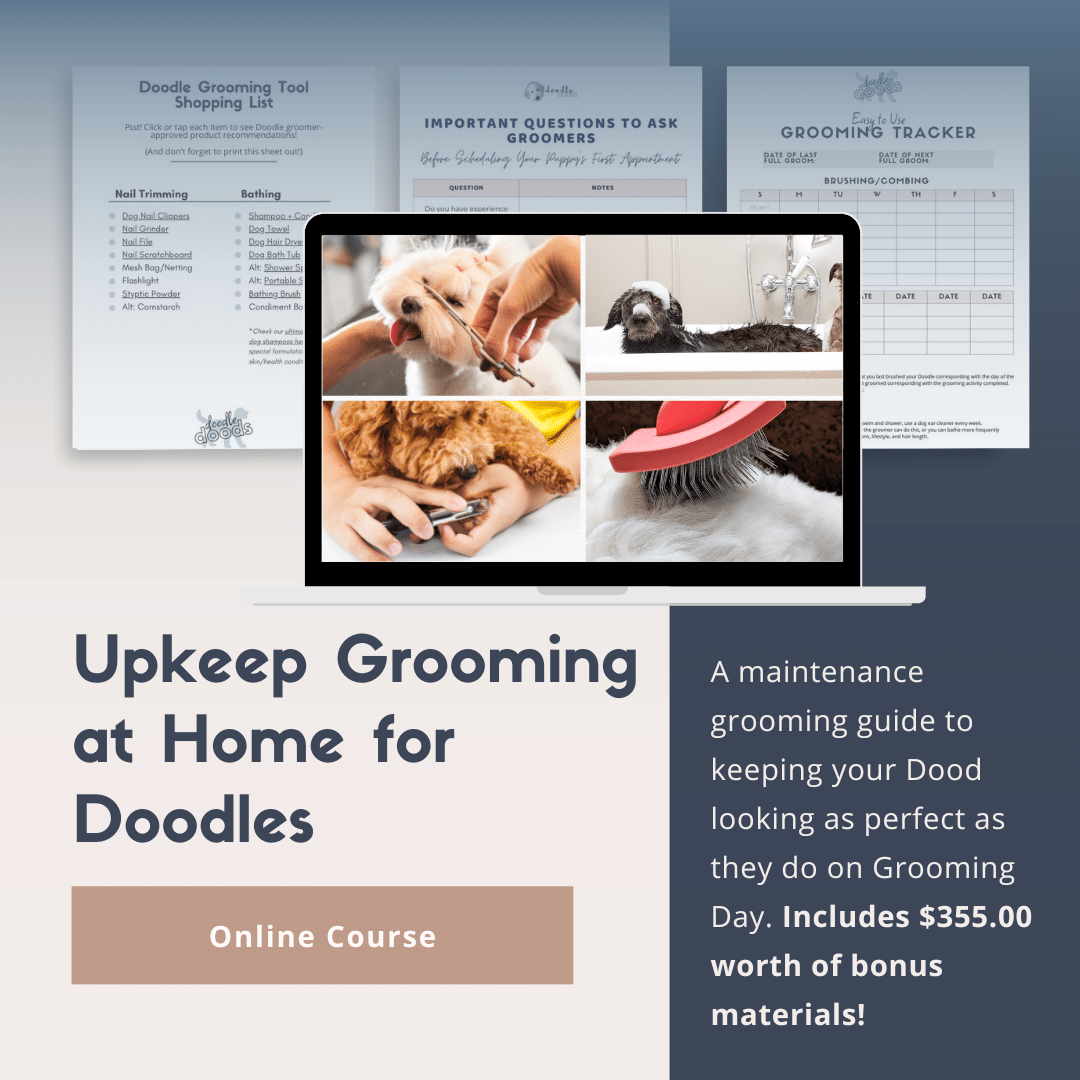
A Maintenance Grooming Guide to Keeping Your Dood Looking as Perfect as They Do on Grooming Day!
Plus, get $355 worth of Bonus Materials for FREE, including:- Doodle Parenthood Community and Support Group ($190 value)
- Video on Trimming Overgrown Eyebrows, Jowls, and Beard ($30 value)
- Video on What Improper Brushing Looks Like ($20 value)
- Easy to Use Doodle Grooming Tracker ($20 value)
- And MORE!
The information on this page is for informational purposes only. It is not intended to be a substitute for professional groomer advice. Always seek the advice of your groomer, veterinarian, or other qualified animal health provider with any questions you may have.

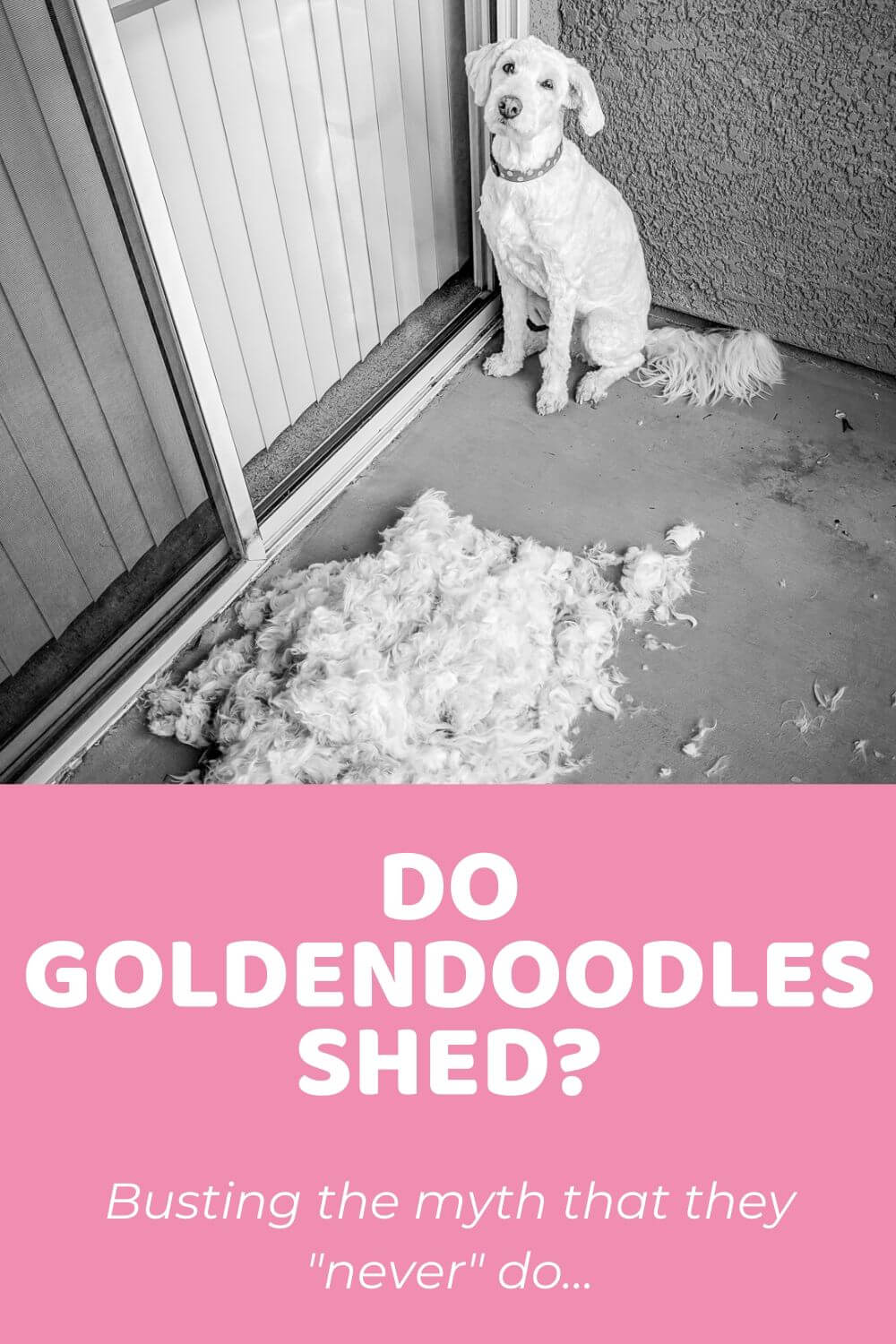
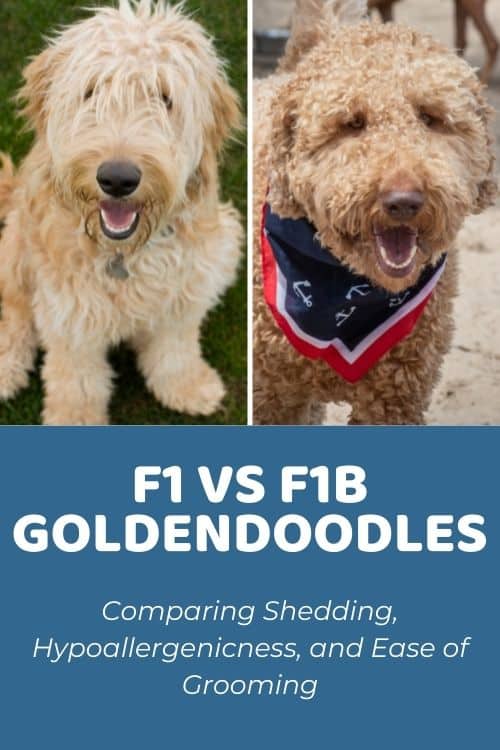
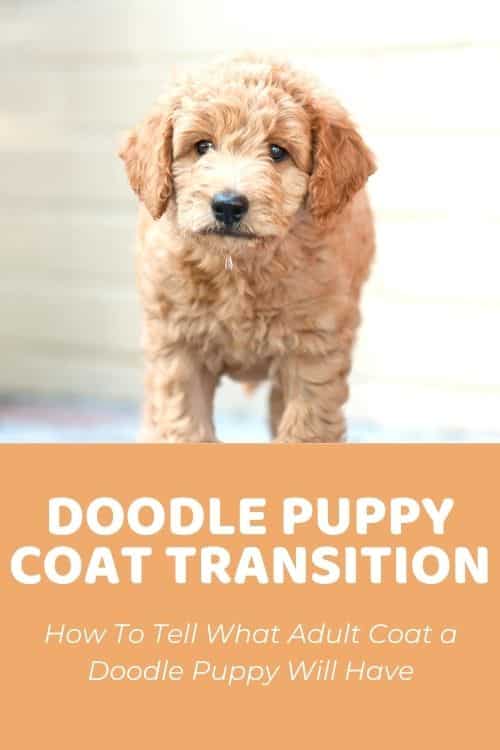

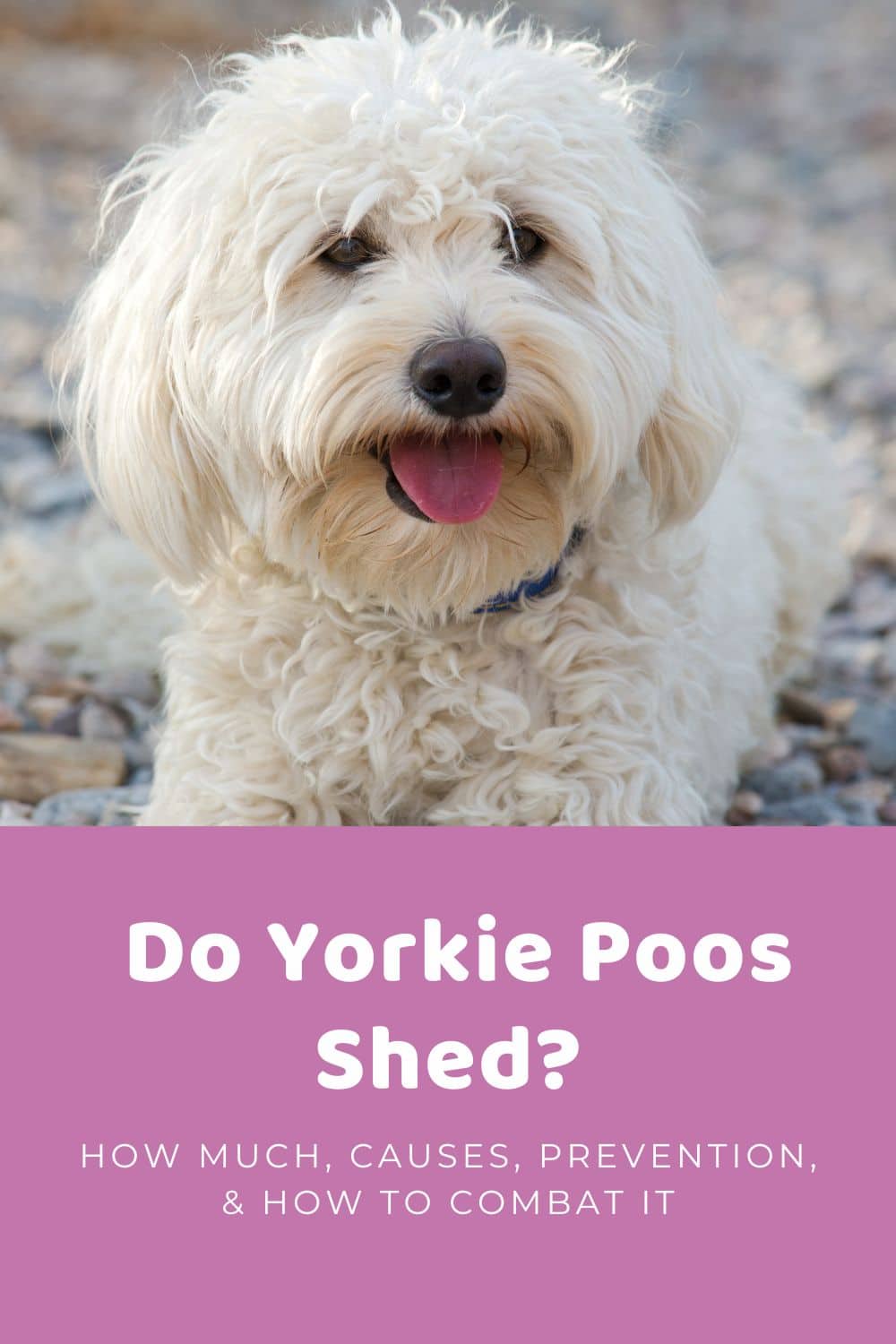

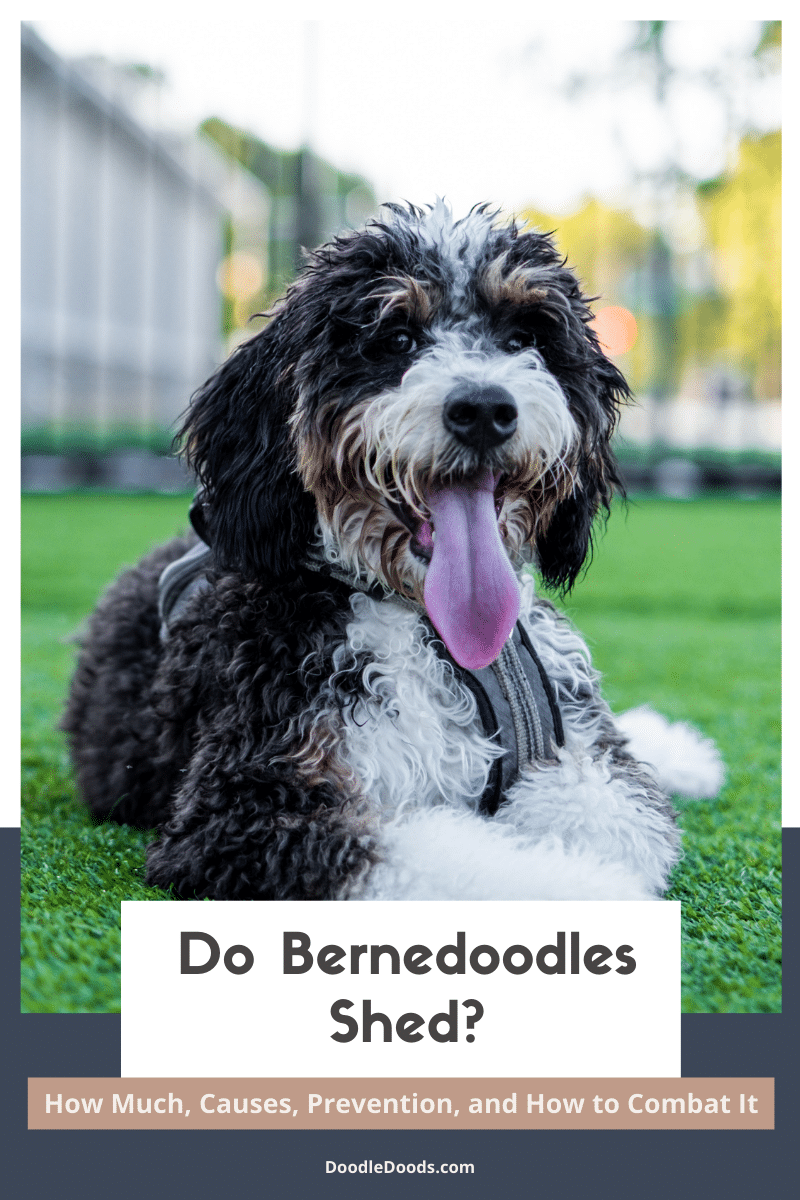
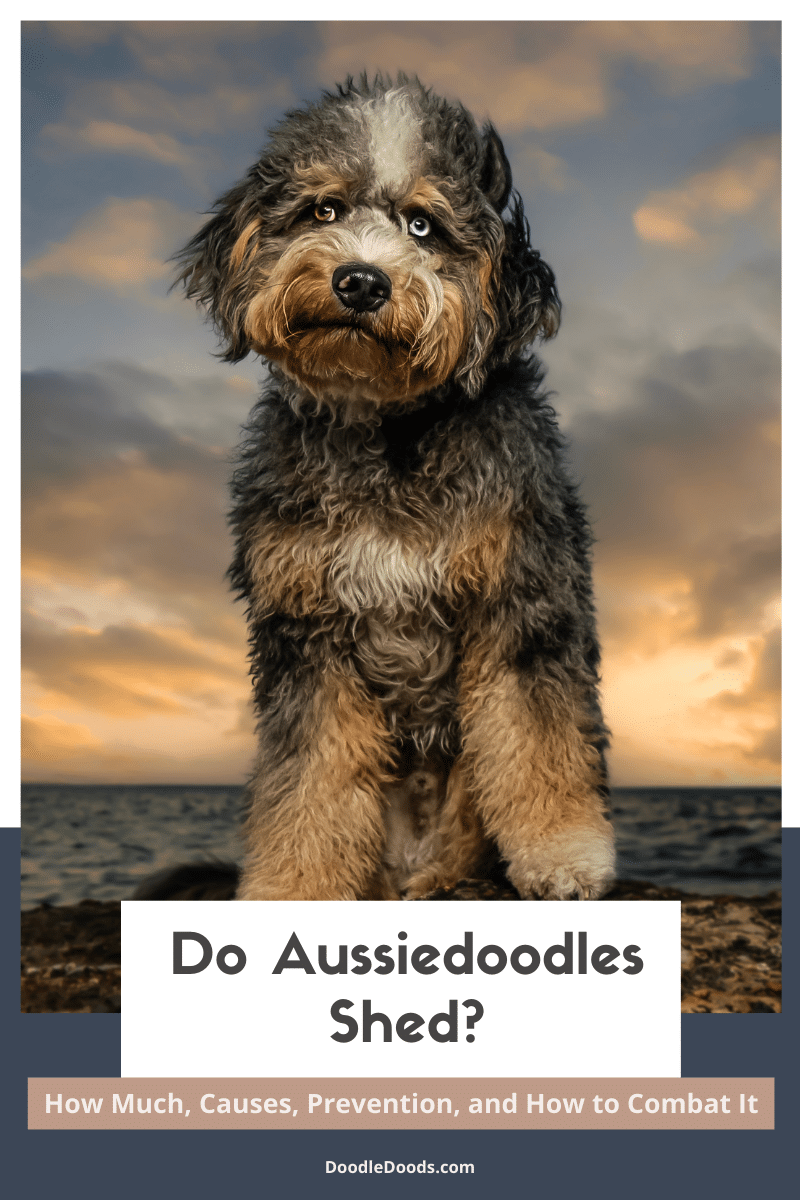
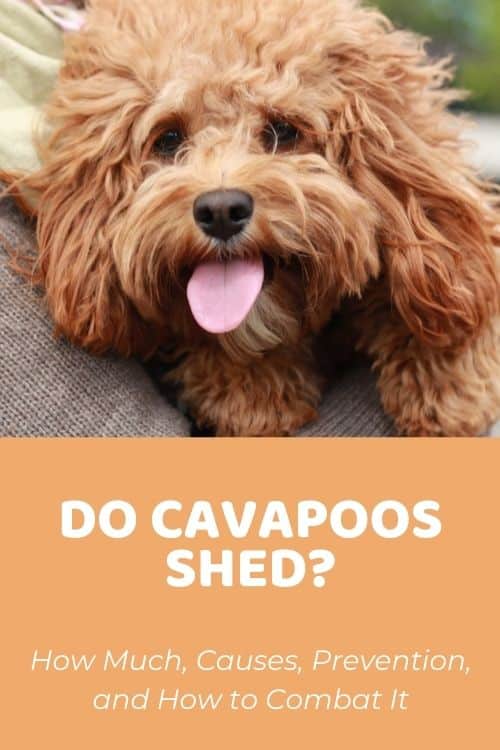
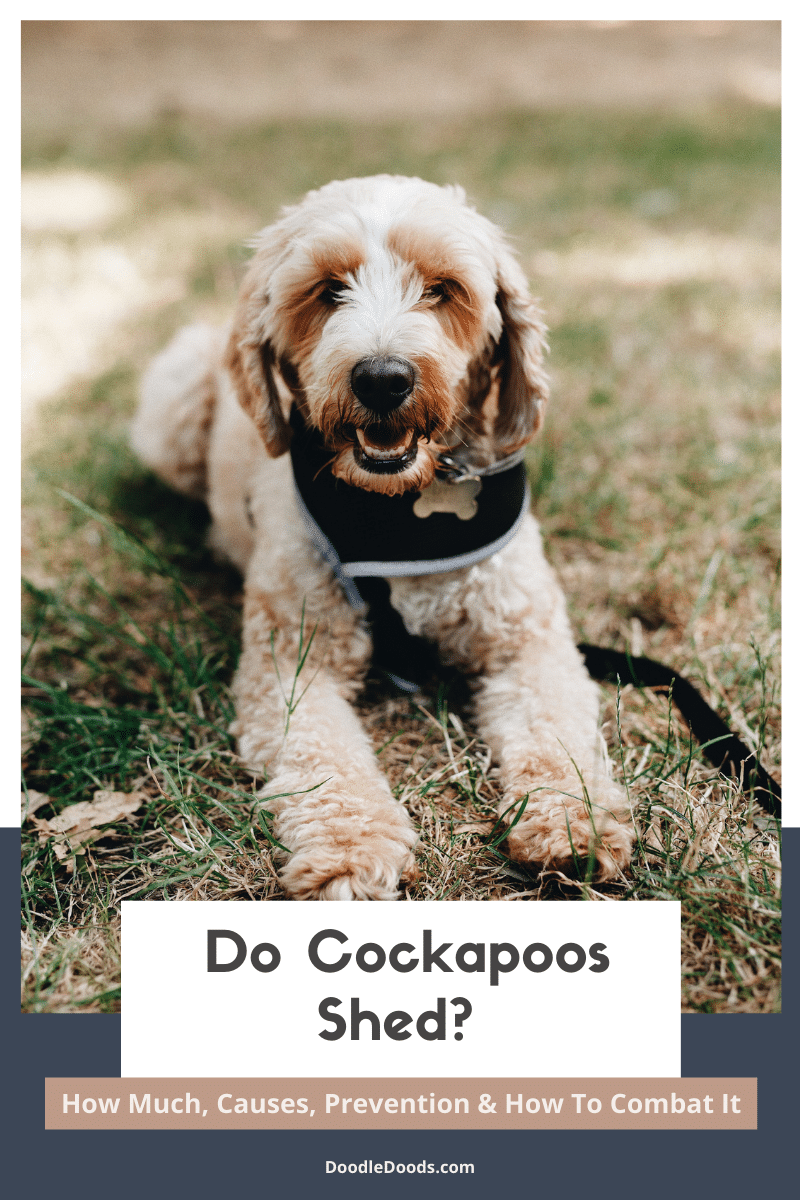

[…] Do Goldendoodles Shed? […]
May 18, 2019 at 10:53 pm